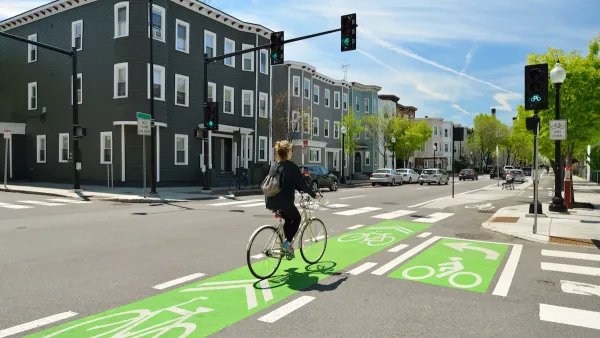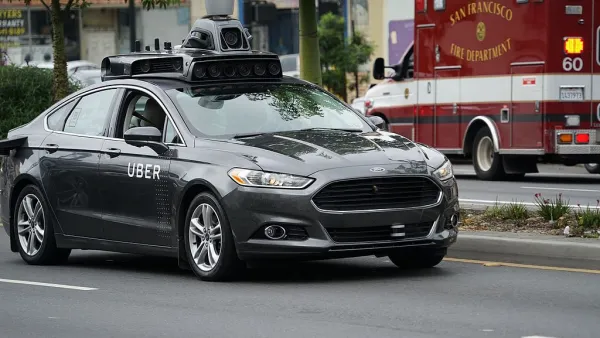The National Transportation Safety Board has released documents related to the Tempe, Arizona, crash that killed a person, highlighting what went wrong with the driverless technology.

"The software inside the Uber self-driving SUV that killed an Arizona woman last year was not designed to detect pedestrians outside of a crosswalk, according to new documents released as part of a federal investigation into the incident," report Aarian Marshall and Alex Davies. But the documents, posted by the National Transportation Safety Board, point to the bigger problem of self-driving technology not being able to understand and anticipate how humans actually behave.
In addition to safety training issues, the documents suggest a series of software-related detection, braking, and vehicle speed problems that contributed to the crash. "When the car first detected [Elaine Herzberg’s] presence, 5.6 seconds before impact, it classified her as a vehicle. Then it changed its mind to 'other,' then to vehicle again, back to 'other,' then to bicycle, then to 'other' again, and finally back to bicycle," say Marshall and Davies.
They note that road design was also a contributing factor in the crash since Herzberg was crossing with her bike "near a pathway that appeared purpose-built for walkers, but was 360 feet from the nearest crosswalk.” The NTSB will hold a meeting later this month about the incident with subsequent plans to release its full report.
FULL STORY: Uber’s Self-Driving Car Didn’t Know Pedestrians Could Jaywalk

National Parks Layoffs Will Cause Communities to Lose Billions
Thousands of essential park workers were laid off this week, just before the busy spring break season.

Retro-silient?: America’s First “Eco-burb,” The Woodlands Turns 50
A master-planned community north of Houston offers lessons on green infrastructure and resilient design, but falls short of its founder’s lofty affordability and walkability goals.

Delivering for America Plan Will Downgrade Mail Service in at Least 49.5 Percent of Zip Codes
Republican and Democrat lawmakers criticize the plan for its disproportionate negative impact on rural communities.

Test News Post 1
This is a summary

Test News Headline 46
Test for the image on the front page.

Balancing Bombs and Butterflies: How the National Guard Protects a Rare Species
The National Guard at Fort Indiantown Gap uses GIS technology and land management strategies to balance military training with conservation efforts, ensuring the survival of the rare eastern regal fritillary butterfly.
Urban Design for Planners 1: Software Tools
This six-course series explores essential urban design concepts using open source software and equips planners with the tools they need to participate fully in the urban design process.
Planning for Universal Design
Learn the tools for implementing Universal Design in planning regulations.
EMC Planning Group, Inc.
Planetizen
Planetizen
Mpact (formerly Rail~Volution)
Great Falls Development Authority, Inc.
HUDs Office of Policy Development and Research
NYU Wagner Graduate School of Public Service




























